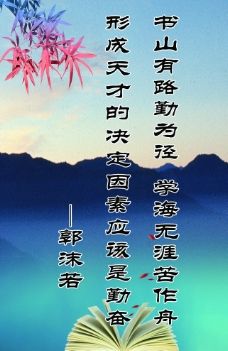
AP Physics 1 Syllabus
®
Curricular Requirements
Page(s
)
CR1 Students and teachers have access to college-level resources
including
1
college-level textbooks and reference materials in print of
electronic format.
CR2a The cour design provides opportunities for students to develop
understanding of the foundational principles of kinematics in the
2
context of
the big ideas that organize the curriculum framework.
CR2b The cour design provides opportunities for students to develop
understanding
of the foundational principles of dynamics in the context of the big 3
ideas that
organize the curriculum framework.
CR2c The cour design provides opportunities for students to develop
understanding
of the foundational principles of gravitation and circular motion 3, 8
in the context
of the big ideas that organize the curriculum framework.
CR2d The cour design provides opportunities for students to develop
understanding
of the foundational principles of simple harmonic motion in the 8
context of the
big ideas that organize the curriculum framework.
CR2e The cour design provides opportunities for students to develop
understanding
of the foundational principles of linear momentum in the context 5
of the big
ideas that organize the curriculum framework.
CR2f The cour design provides opportunities for students to develop
understanding
of the foundational principle of energy in the context of the big 5
ideas that
organize the curriculum framework.
CR2g The cour design provides opportunities for students to develop
understanding 7
of the foundational principles of rotational motion in the context
请预览后下载!
of the big
请预览后下载!
ideas that organize the curriculum framework.
CR2h The cour design provides opportunities for students to develop
understanding
of the foundational principles of electrostatics in the context of 11
the big ideas
that organize the curriculum framework.
CR2i The cour design provides opportunities for students to develop
understanding
of the foundational principles of electric circuits in the context 11
of the big ideas
that organize the curriculum framework.
CR2j The cour design provides opportunities for students to develop
understanding
of the foundational principles of mechanical waves in the context 10
of the big
ideas that organize the curriculum framework.
CR3 Students have opportunities to apply AP Physics 1 learning objectives
connecting across enduring understandings as described in the
curriculum
4, 13
framework. The opportunities must occur in addition to tho
within
laboratory investigations.
CR4 The cour provides students with opportunities to apply their
knowledge of
physics principles to real world questions or scenarios (including
4, 6,
societal )
13
issues or technological innovations) to help them become
scientifically literate
citizens.
CR5 Students are provided with the opportunity to spend a minimum of 25
percent
of instructional time engaging in hands-on laboratory work with an 1
emphasis
on inquiry-bad investigations.
CR6a The laboratory work ud throughout the cour includes
investigations that 2
support the foundational AP Physics 1 principles.
CR6b The laboratory work ud throughout the cour includes 2, 4,
guided-inquiry 6, 7,
laboratory investigations allowing students to apply all ven 8, 9,
请预览后下载!
science practices. 11
请预览后下载!
CR7 The cour provides opportunities for students to develop their
communication
1, 4,
skills by recording evidence of their rearch of literature or
5, 8, 9
scientific
investigations through verbal, written, and graphic prentations.
CR8 The cour provides opportunities for students to develop written and
oral
scientific argumentation skills.
COURSE SYLLABUS
Overview of AP Physics 1
®
All the students in grade 10 may register for an AP Physics 1 cour. In
®
about 45 weeks we meet twice a week for each 40 minutes and follow Sears and
Zemansky’s University Physics with Modern Physics and Cracking the AP
®
Physics 1 Exam (2015 Edition; Princeton Review). We discusd the principle
of some phenomena to form the ability of theoretical analysis. And in this
cour, we emphasize function thought, vector thought and experiment design.
Description of Motion【3 weeks】
Mass point
Reference frame
Coordinate system
Moment and time interval
Position and displacement
Vector algorithm
Velocity and speed
Dotting timer
Acceleration
V-t graph and x-t graph
Analysis of Uniform Variable Rectilinear Motion【3 weeks】
Relationship between velocity and time
Relationship between displacement and time
Free-fall motion
Graphical analysis of motion
Interaction【3 weeks】
请预览后下载!
Basic interaction
Gravity
Elastic force and Hooke’s law
Frictional force
Composition of forces
Resolution of force
Newton’s Laws of Motion【4 weeks】
Newton’s first law
Newton’s cond law
Unit system of mechanics
Newton third law
Application of Newton laws of motion
Overweight and weightlessness
Equilibrium of objects
Curvilinear Motion【8 weeks】
Relative motion
Two-dimensional motion
Horizontally launched projectiles
Projectiles launched at an angle
Circular motion
Centripetal acceleration
Centripetal force
Rotation
Torque and rotational statics
Universal Gravitation and Spaceflight【3 weeks】
Planetary motion
Law of universal gravitation
Gravitational potential energy
Spaceflight
Law of Conrvation of Mechanical Energy【5 weeks】
Purcha the constant
Work
Power
Potential energy
Elastic potential energy
Kinetic energy
Theorem of kinetic energy
The law of conrvation of mechanical energy
Law of Conrvation of Momentum【4 weeks】
Center of mass
请预览后下载!
Impul
Momentum
Theorem of momentum
The law of conrvation of momentum
Collision models
Electrostatic Field and Steady current【4 weeks】
Electric charge
The law of charge conrvation
Coulomb law
Electric current
Power source
Electromotive force
Ohm law
Series circuit and parallel circuit
Power in electric circuits
Law of resistance
Ohm law of a clod circuit
Kirchhoff's law
Oscillations【2 weeks】
Simple harmonic motion
Mass on a spring
Pendulum and other oscillation
Mechanical Waves【6 weeks】
The formation and transmission of waves
The graph of a wave
Wavelength frequency and wave velocity
Diffraction of a wave
Interference of waves
Standing wave
Superposition
Review【veral weeks, as appropriate】
Experiments
Most of our experiments and the experiments for high school
students make little difference. We always make some experiments
to help us understanding the theory deeply.
There list some experiments we have finished:
1. Length and time (Vernier caliper, micrometer caliper,
Stopwatch)
2. Densities of given solids and liquids (Balance and glass
请预览后下载!
measuring cylinder)
请预览后下载!
3. Average speed and instantaneous speed (Dotting timer)
4. Determination of acceleration (Dotting timer)
5. Center of mass of flat discs with irregular shapes
6. Make dynamometer (Spring, rubber band)
7. Springs in ries and in parallel
8. Conrvation of mechanical energy (spring-mass system)
9. Conical pendulum
10. Conrvation of linear momentum
(注:可编辑下载,若有不当之处,请指正,谢谢!)
请预览后下载!

本文发布于:2023-05-22 22:52:53,感谢您对本站的认可!
本文链接:https://www.wtabcd.cn/zhishi/a/1684767174175178.html
版权声明:本站内容均来自互联网,仅供演示用,请勿用于商业和其他非法用途。如果侵犯了您的权益请与我们联系,我们将在24小时内删除。
本文word下载地址:AP-Physics-1-Sample-Syllabus.doc
本文 PDF 下载地址:AP-Physics-1-Sample-Syllabus.pdf
| 留言与评论(共有 0 条评论) |